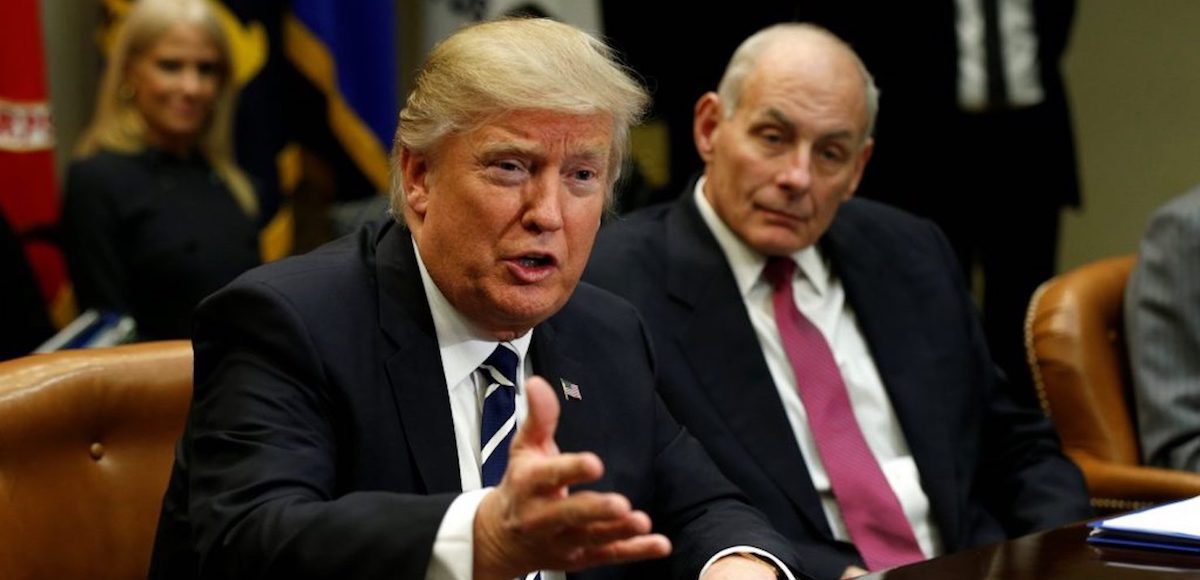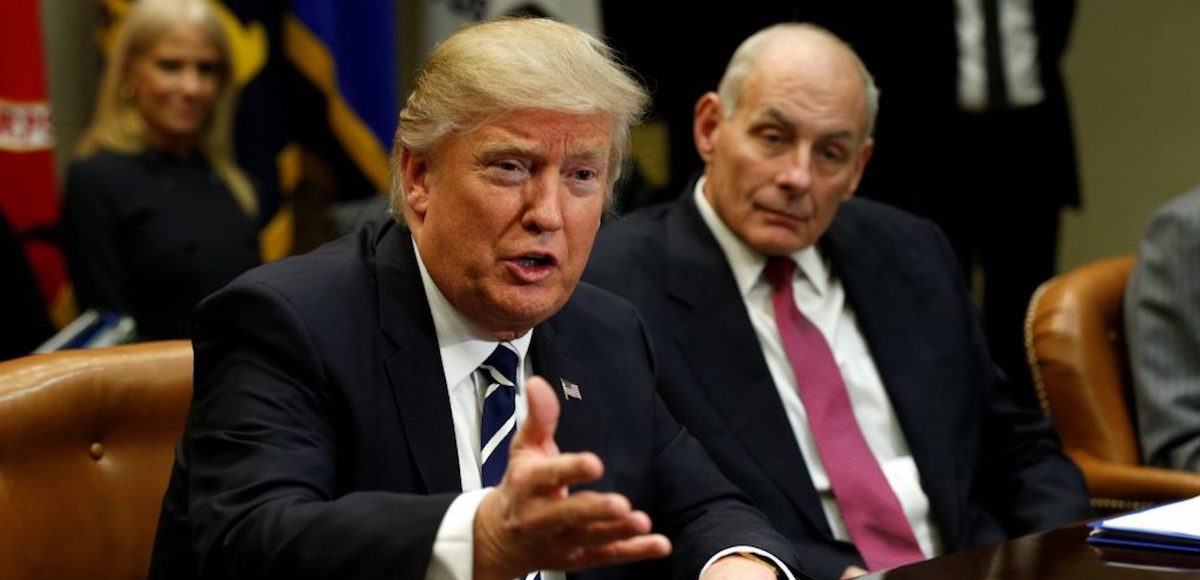

Homeland Security Secretary John Kelly, right, listens to U.S. President Donald Trump during a meeting with cyber security experts in the Roosevelt Room of the White House in Washington January 31, 2017. (Photo: Reuters)
At the current rate, refugee admissions to the U.S. will not reach the 2018 ceiling of 45,000 set by President Donald Trump last year and are at the lowest since the program started in 1980.
The Wall Street Journal reported that 5,000 refugees were admitted to the country during the months of October, November and December, far below similar periods in recent years. Under the Obama Administration, 25,671 refugees were admitted during the same period.
The decline in refugee admissions to the U.S. is the result of a broader national security policy to limit them from countries unable to meet security standards put in place by the Trump Administration. The latest proclamation placed certain limitations and restrictions on travelers from North Korea, Chad, Iran, Libya, Somalia, Syria, Venezuela and Yemen.
The 8 nations were added to a list of other predominantly Muslim-majority nations known for being hotbeds of Islamic terrorism, though the order doesn’t impact roughly 90% of the world’s Muslim population. Still, almost half of the refugees under the Obama Administration identified as Muslim, but only 14% identified as such in the last three months of 2017.
Democrats and leftwing activists have attempted to sue the Trump Administration over the policy change.
The U.S. Supreme Court (SCOTUS) ruled 7 – 2 in December President Trump can fully enforcement his travel restrictions. The two short briefs (available here and here), which represent a major victory for the White House, comes after nearly a year of legal challenges and judicial activism in lower courts.
The initial executive order restricting travel and refugee resettlement came on the heels of the Department of Homeland Security (DHS) revealing nearly a third of the 1,000 domestic terrorism cases currently being investigated by the Federal Bureau of Investigation (FBI) involve those admitted to the U.S. as refugees.
Officials said some of those 300 came to “infiltrate” the U.S., while others were radicalized once they were in the country. The report represented the first official solid tie between the refugee resettlement program and an increase in domestic terrorism.
In October 2017, Sayfullo Saipov, a 29-year-old Uzbekistan national, killed 8 and injured at least 11 others during a terror attack near the World Trade Center. He came to the United States under the Diversity Immigrant Visa (DV) Program in 2010. According to the State Department, the Obama Administration singled out Section 203(c) of the Immigration and Nationality Act (INA) to provide “a limited number” of visas for a class of immigrants known as “diversity immigrants.”
DV visas are allegedly issued to those who come from countries with historically low rates of immigration to the U.S., regardless of risk to national security.
In December 2017, Akayed Ullah, a 27-year old Bangladeshi national living in Brooklyn, was one of four injured when his pipe bomb exploded prematurely in an underground passageway between Seventh and Eighth Avenues on 42nd Street.
He benefited from chain migration.
The term “Chain Migration” refers to the endless chains of foreign nationals who are allowed to immigrate to the United States because citizens and lawful permanent residents are allowed to sponsor their non-nuclear family members. Annual immigration has at least tripled since chain migration began in the mid-1960s, though some estimates are even higher.
President Trump has repeatedly called on Congress to terminate chain migration and the DV program, stating that any plan for action on Deferred Action for Childhood Arrivals (DACA) that doesn’t end them is “a deal-breaker.”







Col. Ben Bannister / January 8, 2018
Hallelujah
/
Sgt. Deckard / January 8, 2018
But our honest #MSM told me they were *up*. What gives?
/
Tomchapman / January 8, 2018
?
/
❄️ 本物イカ娘 ❄️ / January 8, 2018
Squeezing the visa system like he’s squeezing North Korea economically.
/